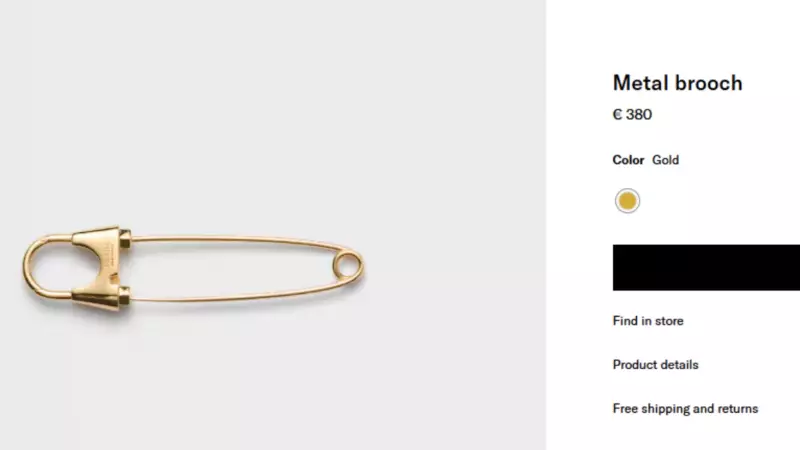
Italian luxury fashion house Prada has found itself in the midst of a social media storm after launching a safety pin accessory with a jaw-dropping price tag of $450 (approximately ₹38,000). The minimalist design, featuring the brand's iconic logo, has triggered widespread criticism and mockery across digital platforms.
The 'Luxury' Safety Pin That Broke the Internet
Social media platforms exploded with reactions as fashion enthusiasts and critics alike questioned the rationale behind pricing a simple safety pin at nearly ₹40,000. The accessory, crafted from sterling silver, measures just 2.5 x 0.5 cm and bears the Prada name etched discreetly on its surface.
"This isn't fashion, it's foolishness," wrote one Twitter user, capturing the sentiment of thousands who joined the conversation. Many compared the price to essential expenses, noting that the safety pin costs more than most people's monthly groceries or electricity bills.
Deja Vu: Following the Kolhapuri Sandals Controversy
This isn't the first time Prada has faced criticism for its pricing strategy in recent months. The brand previously made headlines for selling reinterpreted Kolhapuri sandals at an astonishing ₹1.2 lakh, drawing ire from traditional artisans and conscious consumers who questioned the ethics of such markups.
The consecutive controversies have sparked a broader discussion about luxury pricing, value perception, and whether high-end brands are testing the limits of consumer tolerance.
Social Media Reacts: From Mockery to Genuine Concern
The online response has been overwhelmingly critical, with users creating memes, sarcastic posts, and genuine questions about the state of luxury fashion:
- "Prada proving that common sense is the real luxury we can't afford"
- "₹38,000 for a safety pin while artisans struggle to sell handmade products"
- "This is why sustainable fashion is gaining momentum"
- "Who is actually buying this? Show yourselves!"
The Bigger Picture: Luxury Fashion's Pricing Paradox
Industry experts suggest that such products serve multiple purposes beyond mere functionality. They act as brand statement pieces, conversation starters, and entry-level items for aspirational buyers who can't afford the brand's main collections.
However, critics argue that in a post-pandemic world facing economic uncertainties and rising inflation, such extravagant pricing displays a disconnect from reality and consumer sentiment.
The controversy raises important questions about value, craftsmanship, and the psychology of luxury consumption in modern India, where discerning consumers are increasingly questioning what they're really paying for.





